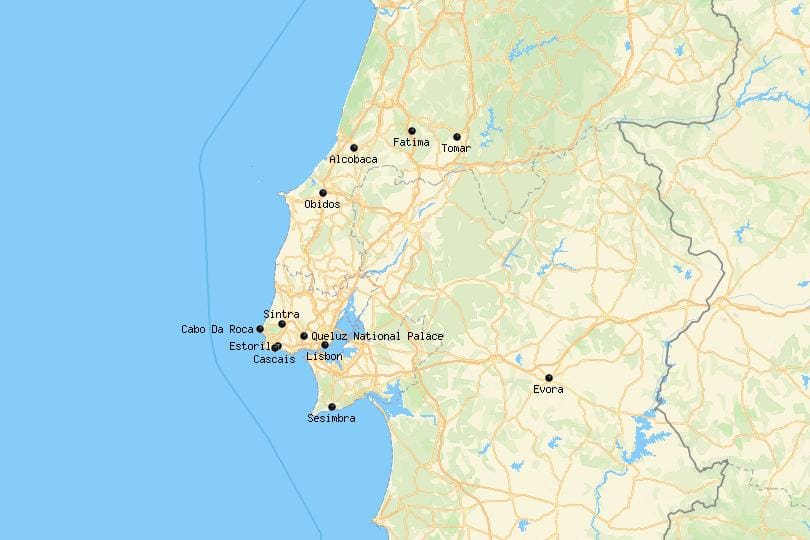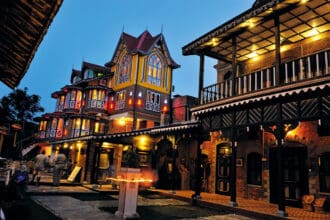Meghalaya, a picturesque state in Northeast India, is known for its lush green landscapes, majestic waterfalls, and enchanting hill stations. Nestled in the lap of the Eastern Himalayas, Meghalaya offers a unique experience for nature lovers and adventure enthusiasts. In this article, we will explore the top three hill stations in Meghalaya that captivate visitors with their beauty, cultural heritage, and warm hospitality.
Introduction
When it comes to hill stations, Meghalaya is a hidden gem that leaves travelers mesmerized with its scenic beauty. The state is home to several breathtaking hill stations, each offering a distinct experience. Whether it’s the cascading waterfalls, living root bridges, or the vibrant local culture, Meghalaya has something for everyone. Let’s delve into the top three hill stations that stand out in this captivating region.
Cherrapunji: The Land of Living Root Bridges
Overview of Cherrapunji
Cherrapunji, also known as Sohra, holds the record for being one of the wettest places on Earth. It boasts lush green valleys, roaring waterfalls, and breathtaking views of the surrounding hills. This hill station is a nature lover’s paradise, offering a serene escape from the hustle and bustle of city life.
Natural beauty and landscapes
Cherrapunji’s landscapes are adorned with terraced fields, dense forests, and deep gorges. The stunning vistas of the Khasi Hills and the Bangladesh plains from various viewpoints leave visitors awestruck. The Nohkalikai Waterfall, one of the tallest waterfalls in India, cascades down from a great height, creating a spectacular sight.
Living root bridges and their significance
Cherrapunji is famous for its living root bridges, an incredible example of bioengineering by the indigenous Khasi tribe. These bridges are made by training the roots of ancient rubber trees to grow in a specific direction, forming natural bridges across rivers and streams. They are not only functional but also serve as a testament to the harmonious relationship between humans and nature.
Climate and best time to visit
Cherrapunji experiences heavy rainfall throughout the year, which contributes to its lush greenery. The monsoon season, from June to September, brings the highest rainfall, transforming the region into a misty wonderland. However, due to the abundant rainfall, it’s important to plan your visit accordingly and be prepared for wet weather.
Tourist attractions in Cherrapunji
Apart from the natural wonders, Cherrapunji offers several other attractions. The Mawsmai Cave, with its intricate limestone formations, is a popular spot for adventure seekers. The Dainthlen Falls and the Seven Sisters Falls showcase the raw power of nature. The Double Decker Living Root Bridge, a unique double-tiered bridge, is a must-visit for those looking to witness the marvels of ancient engineering.
Shillong: The Scotland of the East
Introduction to Shillong
Shillong, the capital city of Meghalaya, is often referred to as the “Scotland of the East” due to its striking resemblance to the Scottish Highlands. With its rolling hills, pine forests, and charming colonial architecture, Shillong exudes an old-world charm mixed with modern vibrancy.
History and cultural significance
Shillong has a rich history and cultural heritage. It was once the capital of the British-administered Assam and later became the capital of Meghalaya after its formation. The city is a melting pot of different communities, including the Khasi, Jaintia, and Garo tribes, each contributing to its diverse cultural fabric.
Scenic beauty and pleasant climate
Shillong is blessed with breathtaking scenery, making it a photographer’s delight. The picturesque Ward’s Lake, surrounded by colorful gardens, offers a tranquil retreat in the heart of the city. The Shillong Peak provides panoramic views of the cityscape, while the Elephant Falls showcases the mesmerizing beauty of cascading water.
Exploring Shillong’s markets and food scene
The bustling markets of Shillong, such as Police Bazaar and Bara Bazaar, are vibrant hubs where locals and tourists come together. These markets offer a plethora of traditional handicrafts, clothing, and local produce, allowing visitors to immerse themselves in the local culture. Additionally, Shillong’s food scene is a delightful fusion of flavors, with traditional Khasi delicacies and international cuisines available in numerous restaurants and cafes.
Must-visit tourist spots in Shillong
Shillong has several attractions that showcase its unique charm. The Don Bosco Museum, one of Asia’s largest cultural museums, provides a comprehensive insight into the indigenous cultures of Northeast India. The Laitlum Canyons, with their panoramic views of deep gorges and rolling hills, offer a breathtaking escape from the city’s hustle and bustle. The Lady Hydari Park, adorned with colorful flowers and a mini-zoo, is a perfect spot for leisurely strolls and picnics.
Mawlynnong: The Cleanest Village in Asia
Introduction to Mawlynnong
Mawlynnong, a small village located near the India-Bangladesh border, holds the distinction of being the cleanest village in Asia. This eco-friendly village is a shining example of sustainable living and community-driven initiatives that have garnered worldwide recognition.
Achievements and recognition as the cleanest village
Mawlynnong’s cleanliness and environmental consciousness have earned it the title of “God’s Own Garden” and the “Cleanest Village in Asia.” The villagers take immense pride in maintaining the cleanliness and hygiene of their surroundings. They actively participate in community cleaning drives, ban the use of plastic, and ensure proper waste management.
Community-based eco-tourism initiatives
Mawlynnong’s success in sustainable tourism lies in its community-based initiatives. The villagers have embraced eco-tourism as a means of generating income while preserving their environment and culture. They offer guided tours, homestays, and cultural experiences, allowing visitors to immerse themselves in the village’s unique way of life.
Exploring the unique living root bridge in Mawlynnong
Mawlynnong is also home to a living root bridge, similar to those found in Cherrapunji. The living root bridge in Mawlynnong is a marvel of natural engineering, where the roots of rubber trees are guided and woven together to form a sturdy bridge. It is a testament to the indigenous knowledge and the harmonious relationship between humans and nature.
Experiencing the local culture and traditions
A visit to Mawlynnong offers a glimpse into the rich cultural heritage of the Khasi community. Visitors can witness traditional dance performances, participate in local rituals, and savor authentic Khasi cuisine. The villagers are warm and welcoming, making every visitor feel like a part of their extended family.
Comparison and Conclusion
Each of these hill stations in Meghalaya offers a unique experience to visitors:
- Cherrapunji showcases the breathtaking beauty of cascading waterfalls and living root bridges.
- Shillong captivates with its Scottish-like landscapes, colonial architecture, and vibrant markets.
- Mawlynnong stands out as a pristine, eco-friendly village, promoting sustainable living and community-based tourism.
Whether you seek natural wonders, cultural immersion, or sustainable travel experiences, Meghalaya’s hill stations have something to offer. The charm, beauty, and warm hospitality of these destinations make them must-visit places for travelers seeking an unforgettable experience.
In conclusion, Meghalaya’s top three hill stations, Cherrapunji, Shillong, and Mawlynnong, are a testament to the state’s natural beauty, cultural heritage, and commitment to sustainable tourism. Each hill station offers a unique blend of attractions, allowing visitors to explore the diverse facets of Meghalaya. So, pack your bags, embark on a journey to Meghalaya, and uncover the enchanting hill stations that await you.
FAQs
- What is the best time to visit Meghalaya’s hill stations?
- The best time to visit Meghalaya’s hill stations is during the months of March to May and September to November when the weather is pleasant and rainfall is minimal.
- Are the hill stations of Meghalaya suitable for family vacations?
- Absolutely! Meghalaya’s hill stations offer a family-friendly environment with a range of activities suitable for all age groups. From nature walks to cultural experiences, there’s something for everyone to enjoy.
- How can I reach Meghalaya’s hill stations?
- Meghalaya is well-connected by air, rail, and road. The nearest major airport is in Guwahati, Assam. From there, you can hire a car or take a bus to reach the hill stations of Meghalaya. Alternatively, you can also take a train to Guwahati and then continue your journey by road.
- Are there any accommodation options available near these hill stations?
- Yes, all three hill stations in Meghalaya offer a range of accommodation options to suit every budget. From luxury resorts to budget guesthouses and homestays, you can find a place to stay that meets your preferences.
- Can I explore multiple hill stations in Meghalaya in a single trip?
- Yes, it is possible to explore multiple hill stations in Meghalaya in a single trip. The distance between these hill stations is relatively short, and well-connected roads make it convenient to travel between them. You can plan your itinerary accordingly to cover multiple destinations and make the most of your trip to Meghalaya.














